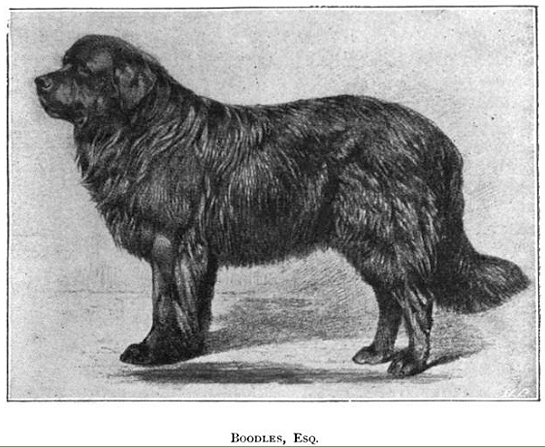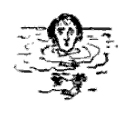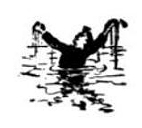[ Huntington / My Dog and I ]
The full title of this work is My Dog And I; Being A Concise Treatise Of The Various Breeds Of Dogs, Their Origin And Uses. Written Expressly For The Novice Containing A Comprehensive Mode Of Treatment Both In Health And Sickness, Together With The Names Of Some Prominent Breeders (New York: Caxton, 1897).
H. W. (Harry Woodworth) Huntington is identified on the title page as "President of the National Greyhound Club of America." The illustrations are by Neville Cain, of Clarencville, Long Island.
The entry on Newfs is preceded by an illustration:

There are, as well, two additional small illustrations which accompanied this article, paying homage to the Newfoundland's celebrate role as a saver of human life. These illustrations are reproduced below in approximately the locations in which they appeared in the original entry:
Origin. — Indigenous to Newfoundland, from which it takes its name. This dog is probably a cross of some of the European dogs, some writers claiming that it shows the blood of both the St. Bernard andpthe water-spaniel.
Uses.—A good companion, and a water-dog as well.
* No Scale of Points adopted.
Head. — Broad, massive, flat on skull; occipital bone well developed ; no decided stop. Muzzle short, clean cut, and rather square in shape.
Coat. — Flat, dense, of coarsish texture, oily.
Body.—Well ribbed up; broad back; neck strong, and muscular loins.
Fore Legs. —Straight, muscular; elbows well let down, and feather all over.
Hind Quarters And Legs. — Hind quarters very strong; free action of legs, which should have little feather. Dew-claws should he removed.
Chest. — Deep, fairly broad, well covered with hair, but no frill.
Bone. — Massive, but not giving a heavy appearance.
Feet. — Large; splayed or turned-out feet objectionable.
Tail. — Moderate length (to hocks); well covered with long hair, but no flag; in repose it should hang downward with a curve at end. Tails with kinks in them or carried over the back are objectionable.
Ears. — Small, set well back, square with the skull, close to head, and covered with short hair; no fringe.
Eyes. — Small, dark brown, deeply set, but showing no haw; wide apart.
Color. — Jet black; a tinge of bronze or splash of white on chest and toes not objectionable.
Height And Weight.—Average height is 27 inches for dog, and 25 inches for bitch; weight, 100 and 85 pounds respectively.
Defects.
Slack loins and cow-hocked. (49 - 50)

The above treatment of Newfoundland characteristics is based on the Newfoundland Club breed standard, which also appears in other works of the period.
Newfoundlands are mentioned one other time in this book, in the section on Flat-Coated Retrievers:
Origin.—The breed is about fifty years old, and probably is a cross of the old English or Irish water-spaniel with setter, collie, or Newfoundland. (60)



